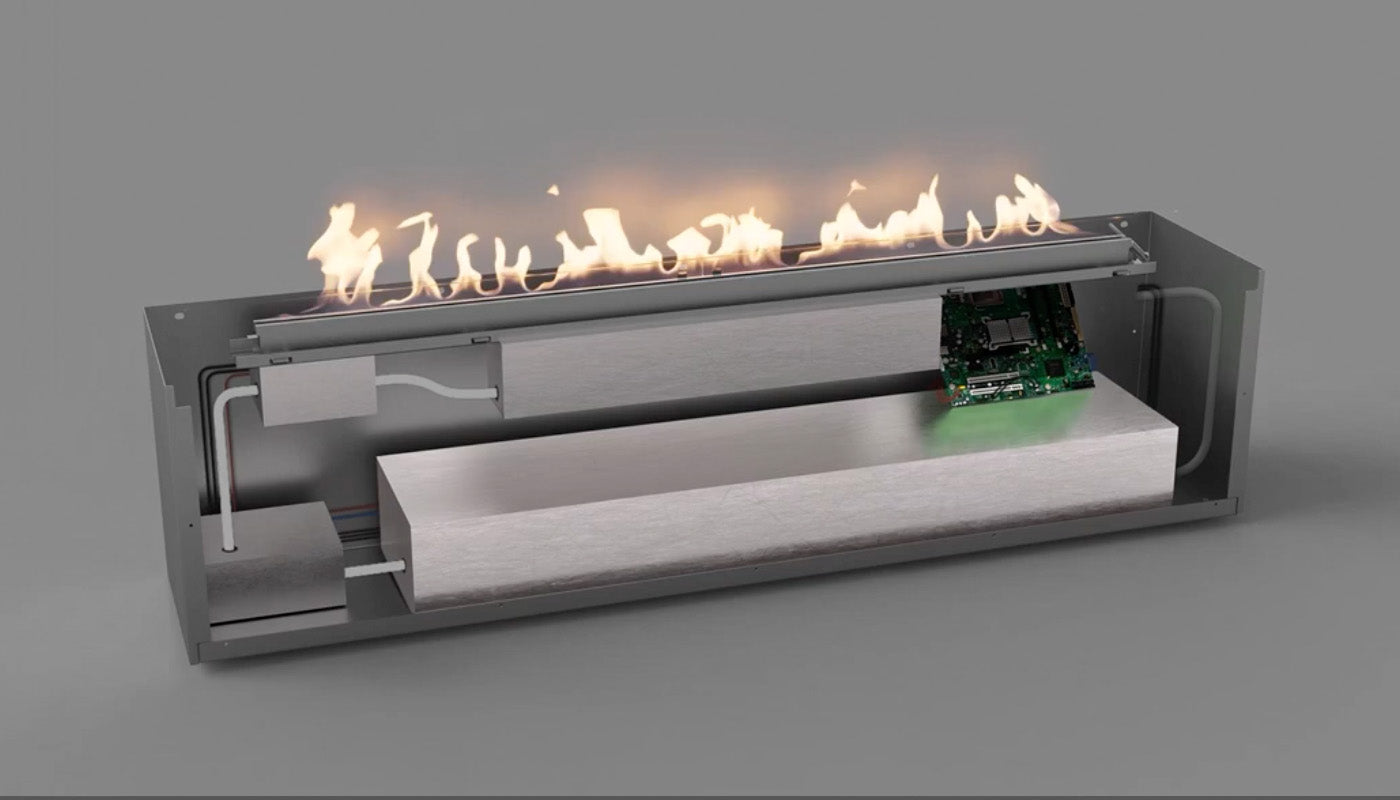
Fire types – which is right for me?
Choosing from the many fire types for your home involves considering several factors, including aesthetics, convenience, environmental impact, and heating efficiency. Here, we'll explore the key differences between four popular options: bioethanol fires, wood-burning stoves, gas fires, and electric fires. (More on this in our FAQ.)
Bioethanol Fires
-
Fuel: Bioethanol fires use bioethanol fuel, a renewable and clean-burning source derived from plants. This makes them a more eco-friendly choice compared to traditional fossil fuels.
-
Installation: They are typically easy to install and do not require a chimney, flue, or gas connection. You can place them in various locations around your home, offering flexibility in design and placement.
-
Aesthetics: Bioethanol fires create real flames, providing a beautiful, natural ambiance. They come in a wide range of designs and styles, from tabletop models to built-in options.
-
Maintenance: Maintenance is relatively simple, with regular cleaning required to remove soot and ash. No chimney cleaning is needed.
Wood-Burning Stoves
-
Fuel: Wood-burning stoves use logs or wood pellets as fuel. This traditional option provides an authentic, rustic feel and the crackling sound of burning wood.
-
Installation: They need a chimney or flue for proper ventilation. Installation can be more complex and costly.
-
Aesthetics: The sight and smell of a real wood fire are unbeatable. Wood-burning stoves often become a focal point in a room, adding a cozy, traditional touch.
-
Maintenance: Regular cleaning of the stove, chimney, and flue is necessary. Proper wood storage and seasoning are also essential for efficient burning.
Gas Fires
-
Fuel: Gas fires use natural gas or propane. They are a convenient and energy-efficient choice, with instant heat at the push of a button.
-
Installation: Gas fires require a gas supply and ventilation, making installation more complex. They often need a flue or chimney.
-
Aesthetics: While they offer real flames, the aesthetics may not match the authenticity of wood or bioethanol fires. Modern designs have improved their visual appeal.
-
Maintenance: Gas fires are low-maintenance, with no ashes to clean up. However, they may require periodic servicing to ensure safety and efficiency.
Electric Fires
-
Fuel: Electric fires use electricity, making them highly convenient and energy-efficient. They require no venting or fuel supply.
-
Installation: Electric fires are the easiest to install. Plug them into an electrical outlet, and they are ready to use. They can be wall-mounted, freestanding, or inserted into existing fireplaces.
-
Aesthetics: They offer visual flame effects and can be designed to mimic the appearance of wood-burning or gas fires, though they lack the scent and crackling sounds.
-
Maintenance: Electric fires are virtually maintenance-free, with no need for cleaning or servicing.
The choice between bioethanol fires, wood-burning stoves, gas fires, and electric fires depends on your priorities. Bioethanol fires and wood-burning stoves provide authenticity and charm. Gas fires offer convenience and efficiency. Electric fires are the most convenient but may lack some of the sensory experiences of real flames. When looking at the different fire types available, consider your lifestyle, aesthetic preferences, and environmental concerns when making your decision, and by all means contact us if you require more assistance.

Fireplace Specification for Architects and Designers
Creating spaces that are both highly desirable and functional is paramount for architects and interior design professionals. Among the many elements that play a role in achieving this balance, fire...
Read more
Media Wall Fireplace Solutions
Interior design is continually evolving to embrace modern living and technology, with one notable transformation being the integration of fireplaces into media walls. The ability to combine the wa...
Read more
BEV Technology – Future-friendly Flames
Innovations in fireplace technology are playing a role in the need to reduce our carbon footprint and transition towards cleaner and more sustainable energy sources. Among these innovations, Burni...
Read more
